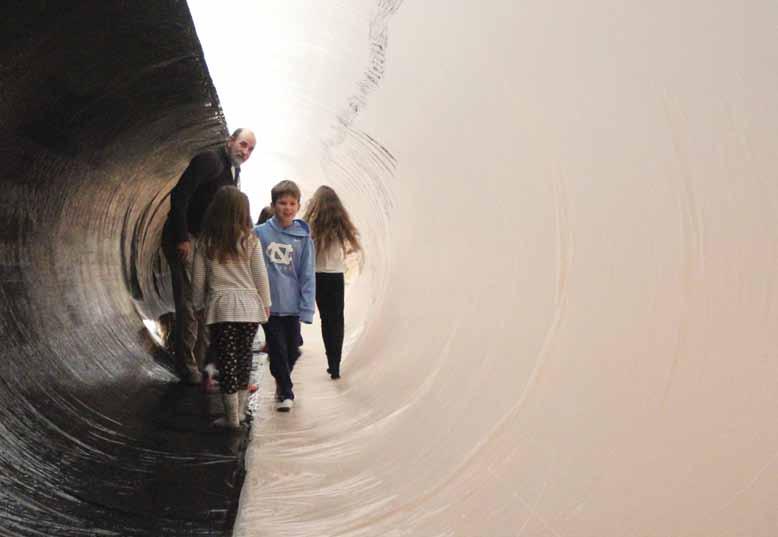
2 minute read
More Than a Letter or Number
How authentic assessment anchors our education
Our authentic, thoughtfully designed approach to student assessment is one of the greatest strengths of our school. Educational research has established the benefits to students of evaluation that goes beyond cumulative letter and number grades. In the last four years, a growing movement of schools across the globe is choosing alternative assessment methods. But Carolina Friends School’s pioneering educators recognized the value of a more holistic approach from the very beginning.
Advertisement
— ELLEN MITCHELL, Upper School Teacher, writing for We & Thee in 1980
The cornerstone of our assessment, student narratives, provide teacher observations as well as results of multiple data points. These include a variety of testing techniques and demonstrations of knowledge: from quizzes to podcasts, in-class games to group projects and written assignments, just to name a few. Head Teachers and teachers continually examine our portfolio of tools based on current research in child development and recognized best practices in qualitative and quantitative measures. While teachers collect this information to share with parents, the role of the student in the process is crucial. Our assessment process teaches students how to recognize good work, identify weak points, and to set a high bar of excellence for themselves.
Shifting the focus away from the reward or punishment that comes with traditional grading and toward feedback and encouragement allows students to dig deeper and reach higher in their knowledge and understanding. It also encourages hands-on and interactive learning — while the path to a student’s mastery of concepts and skills is important, the differences from one student’s path to another are not. Without the stigma of traditional report card grades, students are freed to take chances, to explore a topic or skill that challenges them without fear of failure. Because the assessment is continual, it also allows students to continue working in an area until they are able to understand and apply that learning, progressively building from a place of strength.
Assessing student progress in this holistic way also helps to reduce the role of bias in grading. Each individual learning style is informed, in part, by their experiences. Personal identities of gender, race, religion, culture, and socio-economic status are just a few of the facets that shape not only a child’s lived experience but a teacher’s. Providing a variety of ways to evaluate students’ learning creates more opportunity for them to demonstrate that growth, and it removes the additional identifier of being an “A” or “C” student. Each child is encouraged in a way that allows them to be their best.







